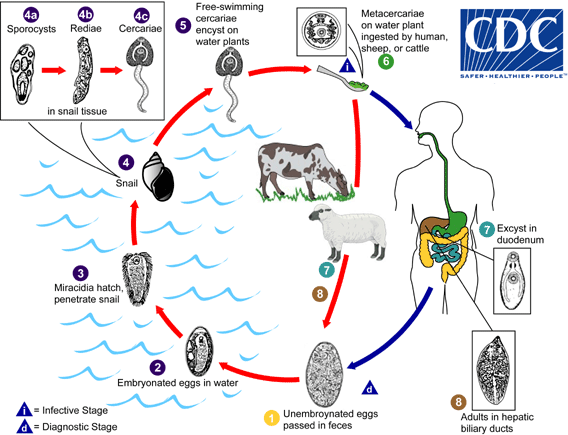Ficheiro:Fasciola LifeCycle.gif
Fasciola_LifeCycle.gif (568 × 435 píxeles; tamaño do ficheiro: 58 kB; tipo MIME: image/gif)
Historial do ficheiro
Prema nunha data/hora para ver o ficheiro tal e como estaba nese momento.
| Data/Hora | Miniatura | Dimensións | Usuario | Comentario | |
|---|---|---|---|---|---|
| actual | 9 de xullo de 2015 ás 19:05 |  | 568 × 435 (58 kB) | CFCF | updated |
| 10 de maio de 2006 ás 16:59 |  | 568 × 435 (45 kB) | Patho | {{Information| |Description=Causal Agents: The trematodes Fasciola hepatica (the sheep liver fluke) and Fasciola gigantica, parasites of herbivores that can infect humans accidentally. Life Cycle: Life cycle of Fasciola hepatica Immature eggs are disch |
Ligazóns de imaxe
As seguintes páxinas ligan con esta imaxe:
Uso global do ficheiro
Os seguintes wikis empregan esta imaxe:
- Uso en ca.wikipedia.org
- Uso en ceb.wikipedia.org
- Uso en cs.wikipedia.org
- Uso en de.wikibooks.org
- Uso en es.wikipedia.org
- Uso en fr.wiktionary.org
- Uso en gl.wikipedia.org
- Uso en hi.wikipedia.org
- Uso en it.wikipedia.org
- Uso en kk.wikipedia.org
- Uso en ru.wikipedia.org
- Uso en se.wikimedia.org
- Uso en sv.wikipedia.org
- Uso en vi.wikipedia.org
- Uso en vi.wiktionary.org

